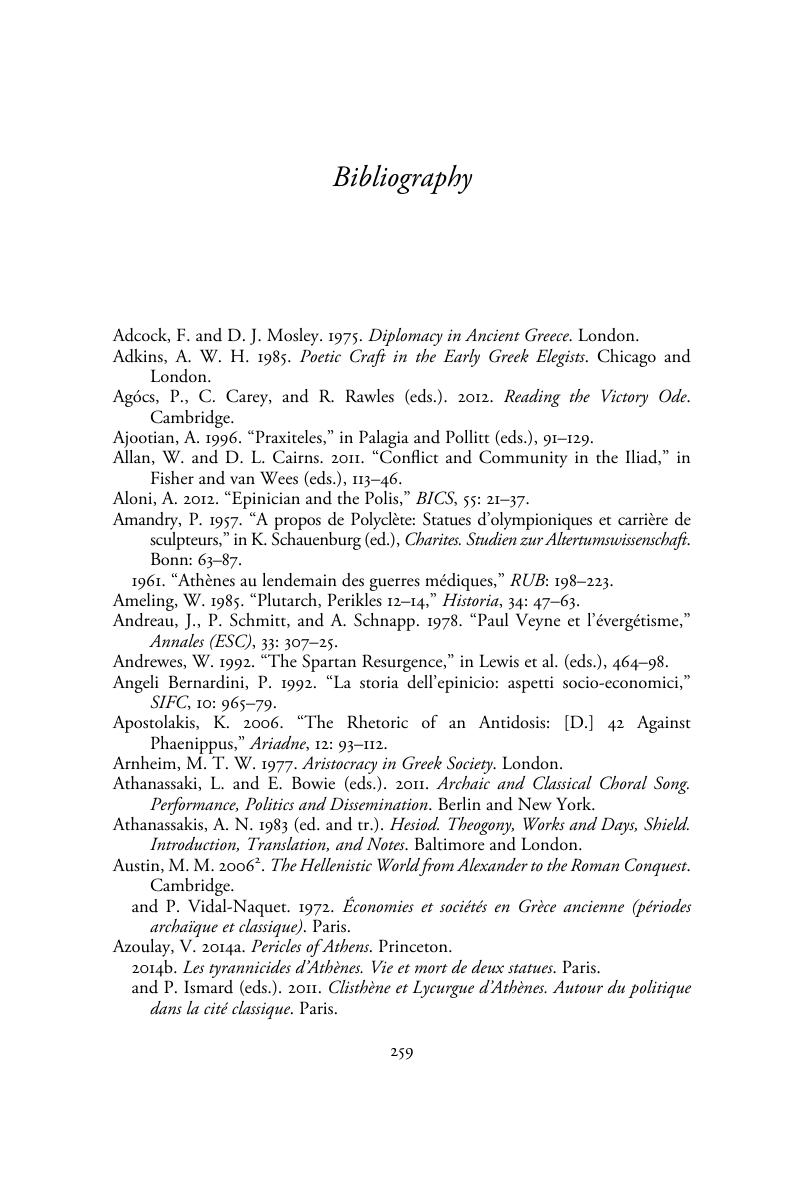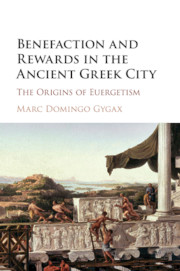Book contents
- Benefaction and Rewards in the Ancient Greek City
- Benefaction and Rewards in the Ancient Greek City
- Copyright page
- Dedication
- Contents
- Preface
- Book part
- Glossary
- Introduction
- Chapter 1 Synchronic approaches
- Chapter 2 Creating an institution
- Chapter 3 Continuity and change (1): foreignersand athletes
- Chapter 4 Continuity andchange (2): citizens
- Chapter 5 The generalization of euergetism
- Conclusions
- Bibliography
- The index of literary sources
- The index of inscriptions
- General Index
- References
Bibliography
Published online by Cambridge University Press: 05 July 2016
- Benefaction and Rewards in the Ancient Greek City
- Benefaction and Rewards in the Ancient Greek City
- Copyright page
- Dedication
- Contents
- Preface
- Book part
- Glossary
- Introduction
- Chapter 1 Synchronic approaches
- Chapter 2 Creating an institution
- Chapter 3 Continuity and change (1): foreignersand athletes
- Chapter 4 Continuity andchange (2): citizens
- Chapter 5 The generalization of euergetism
- Conclusions
- Bibliography
- The index of literary sources
- The index of inscriptions
- General Index
- References
Summary

- Type
- Chapter
- Information
- Benefaction and Rewards in the Ancient Greek CityThe Origins of Euergetism, pp. 259 - 291Publisher: Cambridge University PressPrint publication year: 2016



